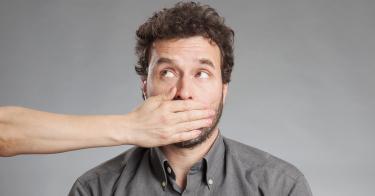“Grow up.”
That’s what Yale law professor Kate Stith recently told disruptive students when they would not allow two guest speakers—representing different sides of pressing cultural debates on gender and religion—to deliver remarks on why they agreed on the important issue of free speech.
Campus “shout-downs” have made headlines for over a decade. But what are the driving forces behind them and the riots that increasingly plague colleges across the country?
Rioting students and their faculty supporters are not just expressing disagreement. They are vying for power in the name of critical race theory. Pay careful attention to their actions and the words they use.
>>> We Can Save Education. Here’s How.
In last month’s incident at Yale, rioters pounded on the walls in the hallway after they left the room, “making it difficult to hear the panel.” In a recent shout-down at the University of California, rioters yelled for 45 minutes at guest speaker Ilya Shapiro, who found himself in the spotlight after tweeting about President Biden’s Supreme Court nominee, Judge Ketanji Brown Jackson.
Regardless of what you think about Mr. Shapiro’s tweets or Yale’s guest speakers, the students at Yale and in California were not protesting, they were trying to make sure some ideas could not be heard at all.
Through these actions, these students were living out the worldview of critical theory and its philosophical children, critical race theory and critical gender studies. They view everything in public and private life as the result of power imbalances.
Videos of shout-downs on college campuses taken over the last 10 years show students repeating words and phrases that are central components of critical theory and critical race theory. Often these incidents are accompanied by open letters from students and faculty containing the key principles of, in particular, critical race theory.
Indeed, censorship and violent disruptions are at the core of critical race theory. For example, in April 2018, students gathered inside Columbia University’s Butler Library shouting “decolonize Columbia,” referring to critical race theory’s idea that books authored by white individuals should be removed from school curricula—banned.
That notion is alive and well in some K-12 schools, where critical pedagogues (teachers who use critical theory in their instruction) organized around the hashtag #disrupttext to remove books such as “To Kill a Mockingbird” from reading lists.
Writer and philosopher Frantz Fanon conceived the idea of decolonization in the mid-20th century. “Decolonization,” he wrote, “is always a violent phenomenon.” Critical race theorists have adopted his concept, teaching their students that rioting to silence ideas with which they disagree is justified. Critical race theory founder Derrick Bell once wrote that he hoped “scholarly resistance will lay the groundwork for widescale resistance.”
>>> Critical Race Theory, Public Schools, and Parental Rights
After the recent riot at Yale, students signed an open letter that contained critical race theory’s ideas. For example, it demanded that the school administration advance equity rather than equal treatment under the law—i.e., discriminate against some people so that everyone experiences the same outcomes in life, regardless of individual effort.
In 2015, students at some 80 universities wrote letters to their schools’ administrators with demands that officials admit “white privilege,” “decolonize” school curricula, and focus on “oppression” in the campus climate.
State lawmakers should consider policies that protect anyone who wants to listen and be heard in public areas of public college campuses. Public universities should be prepared to issue consequences to individuals, including students, who exercise the “Heckler’s Veto,” and they should engage local law enforcement as necessary to keep people safe. Private university leaders should adhere to their own statements supporting free speech.
Last week, a federal lawmaker held a hearing and blamed “right-wing groups and media outlets” for pushing “false narratives” about free speech. False narratives? Critical race theory has no room for free speech—just look at the evidence. Rioting students and others on campus have been telling us this all along.
This piece originally appeared in The Washington Times





